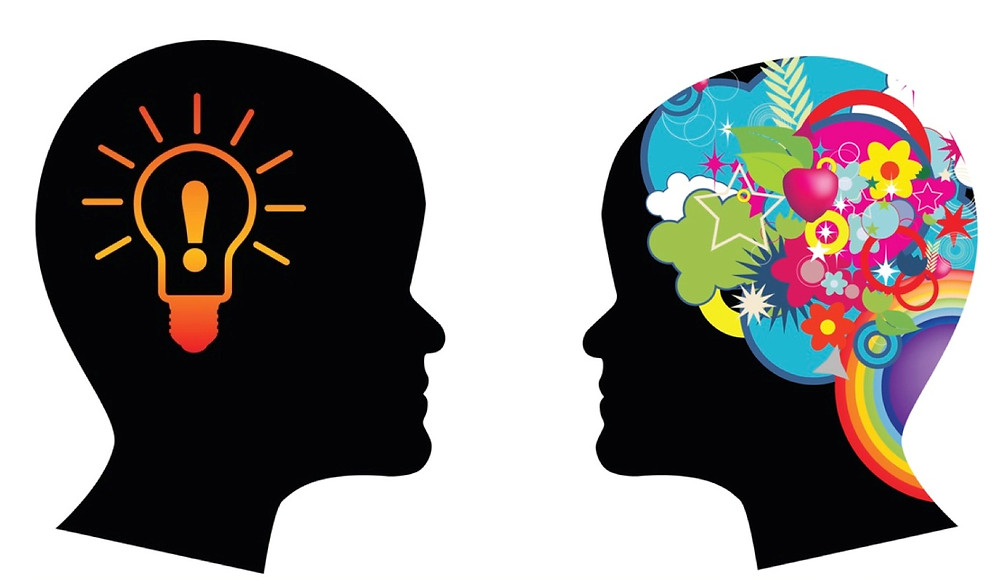
Unit V Lesson 1
From the development of bioenergetics in 1993, Dr. Goiz began to find pairs related to emotional disorders, which Dr. Goiz called psycho-emotional pairs. In a short time, Dr. Goiz increased the list of pairs for the respective psychoemotional disorders. And over time biomagnetists have added many other pairs to Dr. Goiz's original list; for example, for depression we find up to 9 biomagnetic pairs.
In addition to Dr. Goiz's psycho-emotional pairs, in this unit we are also going to study some other approaches for working with emotions, as we consider them to be of great interest and complementary to Dr. Goiz's pairs.
We refer in the first place, to the Traditional Chinese Medicine, that for thousands of years has developed a holistic approach to the body, emotions and health, which gives us a very broad and interesting view of the organs, in relation to acupuncture meridians, emotions, diseases and many others aspects.
We will also present, from a bird's eye view, the system developed by Dr. Bradley Nelson called the Emotion Code, since it is a very simple technique that goes hand in hand with biomagnetism for the treatment of emotional blockages.
But first we will give a brief introduction to understand the nature of emotions and how they are experienced in our bodies.

What are emotions
All humans have experienced emotions, but what are they? We know that they are related to ideas, to situations and when they arrive they cause a response and a sensation in our bodies: Anger makes the blood boil, fear makes the legs tremble, while sadness causes tears. All physical reactions are provoked, since emotions are related to chemical substances, neurotransmitters that flood the bloodstream when we experience them.
Primary emotions
Psychology offers us a study on emotions since they form an essential part of the mental and psychic life of humans.
Even though there are various emotional states and nuances of feeling, there are really only a handful of basic or primary emotions. Basic emotions are innate and universal. This means that all humans are already born with them and do not depend on education. We find them on the five continents, in all cultures, races and socio-cultural levels. To date there is no consensus on what the basic emotions are, but we will take the following list as a reference:
All emotions, as we have already pointed out, cause a physical reaction that is experienced in different ways and in different parts of the body. As we can see, emotions are adaptive responses to external stimuli. Especially humans have evolved to communicate through facial expressions, in such a way that each emotion causes a facial (and body) expression in a natural automatic way.
From the handful of basic emotions that every human being has, a whole series of secondary emotions are derived or branched out. For example, from disgust derives disappointment, withdrawal, discomfort, disgust, aversion, etc., as shown in the graph.

In feelings (which are many) there is already an elaboration or mixture of a series of emotions, situations and judgments. Or put another way, emotion is conceptualized and nuanced to create a state of mind, here memory, reason, etc. come into play. Therefore, feelings are much more complex than emotions, to name a few: guilt, shame, longing, revenge, etc..
Why are emotions important?
Evolution has developed emotions as a way of reacting to stimuli in the environment. We cannot say that there are bad or good emotions, since they all allow us to survive. Disgust or dislike allows us to get away from what we do not like and can potentially harm us like a bad smell, a spoiled food that we reflexively spit out. Vomiting is also a reflex reaction to disgusting or unpleasant situations.
Anger or rage allows us to face dangers either by fighting or fleeing, it also allows us to set limits and impose ourselves on others.
Joy produces endorphins that ask our brain to look for this type of stimuli and situations again, since the feeling of reward will be sought.

Sadness will lead us to avoid potentially harmful situations and above all to seek social support.
Love strengthens the ties of couple, family and social. Love can be considered an emotion when it generates a physical response, as is the case with passion, physical attraction, or even liking for a person (not necessarily sexual). The word love has many different nuances, so we can say that it is also a feeling, which can be very high, by the way, since it can include high values such as respect, commitment. What is certain is that love has an essential element that is empathy. We also have abstract types of love such as love of country or love for all humanity.
Emotional intelligence
Currently, the proper management of emotions has regained importance in the concept of "emotional intelligence". First, in 1983 Howard Gardner coined the term "multiple intelligences" to describe a whole series of intelligences and abilities that human beings have, in addition to rational intelligence. Some of these intelligences are corporal, musical, existential, interpersonal, among others.

Shortly after, psychologist Daniel Goleman is the one who popularized the concept of emotional intelligence through his bestseller with the same name. In the book he explains the different competencies and skills that make up emotional intelligence. Like all intelligence, the correct management of emotions allows us to have better relationships with family, work, and in other environments. Emotional intelligence starts from being more aware first of one's own emotions, and then of those of others; Based on this knowledge, the other skills can be developed. This gives us greater possibilities of achieving success in relationships and work and therefore: happiness. Recent studies point out that successful people are not those who have a higher IQ (logical-mathematical intelligence) but those who have a higher emotional intelligence (empathy, self-regulation, motivation, self-knowledge...)
Emotional blockages
The problem is when emotions are blocked, when they get trapped in some part of our body and affect both our emotional life and our body. Because, as is well known, emotions, when they do not flow naturally, or when they are not expressed properly, affect our body and our health. In fact, there are currently several schools of thought that place emotions as the main cause of physical disorders such as Traditional Chinese Medicine, Homeopathy, or the most recent New Germanic Medicine. We will address some of them in other lessons of this course.

Professional work with emotions
As we can see, the topic of emotions and feelings is extremely extensive. Work with emotions, to be really effective and safe, should be approached by a person with extensive knowledge and experience on the subject: a psychologist, or even a psychiatrist. Since many times it will not be enough to find a pair and apply it, but it would be necessary to do a job of investigation and elaboration.
The inquiry is to question the origin of the emotion, the moment and the exact situation in which the emotion was blocked. You could also ask about the age of the person, the people involved, etc. This can be done directly by asking the querent, or through bioenergetics. On some occasions (the least) it will be enough to apply the torque, unlock the emotion and not go deeper into the subject. This can also be asked to the superconscious: Is it necessary to investigate more about this emotion?
The elaboration consists of a whole therapeutic work, where the facilitator-therapist elaborates a series of questions, comments, gives feedback and guides the person so that they are more aware and can understand the emotion and the situation in which they could have been blocked. To understand why? and also the why? This will help resignify the situation, give it a new narrative; to forgive, if necessary.
All of this is part of the process. Perhaps the emotional problem is tied to a family relationship, childhood trauma, or some other situation that cannot be resolved in a single session. The therapist must be able to identify and assess each case. If necessary, they will be able to promptly direct the consultant to the type of therapy and the most qualified professional to help him. Seeking other types of help does not necessarily mean that the therapist lacks resources, but rather that in many cases external support is an indispensable complement. Some options can be:
The biomagnetic pair and Dr. Bradley Nelson's technique for unblocking emotions are very powerful tools and in many cases a single session is enough, following the established protocols to help improve the person's emotional state. However, the attention that a therapist who knows more about the subject of emotions and mental disorders will always be better. If you do not have studies in psychology or psychiatry, at least take on the task of studying these topics, to be able to handle the fundamental concepts and have an overview.
Questions or comments: info.gfu.lineasolar@gmail.com